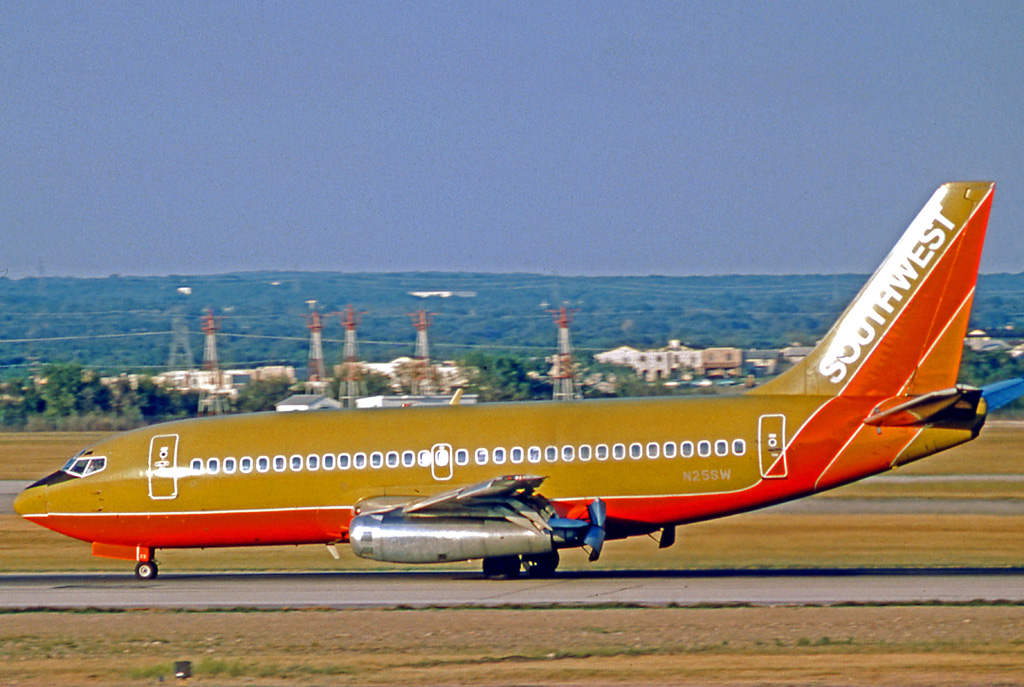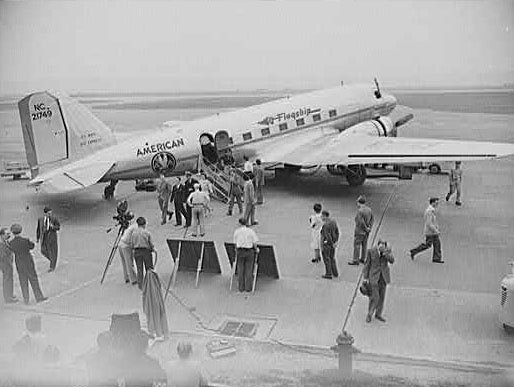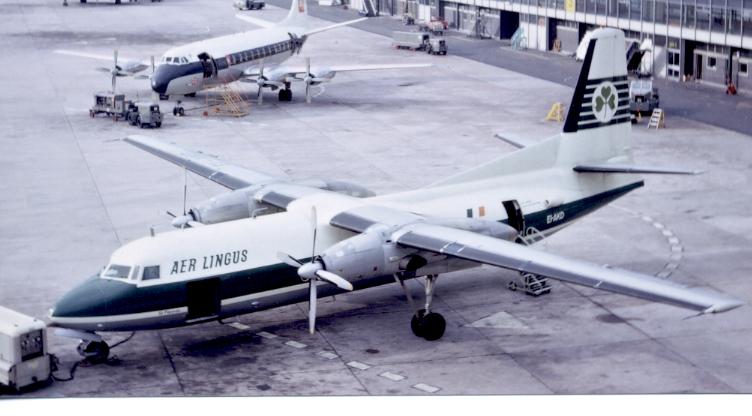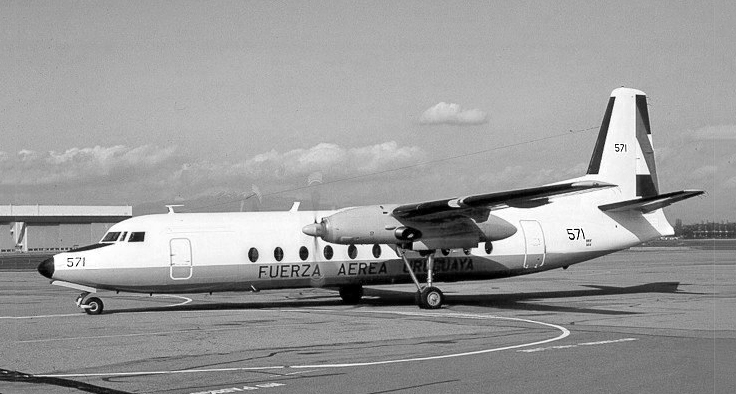|
Bonanza Air Lines
Bonanza Air Lines was a local service carrier, a US scheduled airline focused on smaller routes in the Western United States (and eventually Mexico) from 1949 until it merged with two other local service airlines to form Air West in 1968. Its headquarters was initially Las Vegas, Nevada, and moved to Phoenix, Arizona in 1966. The company started as Bonanza Air Service, a charter operator in Las Vegas, before becoming a Nevada intrastate carrier in 1946 operating between Las Vegas and Reno. In 1949 it obtained Federal certification as a local service (or feeder) airline, starting service between Phoenix and Reno the same year. In the 1950s and early 1960s the airline expanded into Arizona, Southern California and Utah, including Phoenix, Los Angeles and Salt Lake City. Until 1978 Bonanza had the only scheduled nonstop flights between Las Vegas and Reno. It became an international airline just before it merged with Pacific Air Lines and West Coast Airlines to form Air West, fly ... [...More Info...] [...Related Items...] OR: [Wikipedia] [Google] [Baidu] |
Intrastate Airline
Intrastate airlines in the United States were air carriers operating solely within a single US state and taking other steps to minimize participation in Commerce Clause, interstate commerce, thus enabling them to escape tight federal economic airline regulation prior to Airline Deregulation Act, US airline deregulation in 1979. These intrastate carriers therefore amounted to a small unregulated, or less regulated, sector within what was otherwise then a tightly regulated industry. As detailed below, flying within the geographic boundaries of a single state was a necessary but not sufficient condition to qualify as an intrastate carrier. Despite providing a small proportion of US airline capacity, the success of these airlines, in particular Pacific Southwest Airlines (PSA), and Southwest Airlines, played a major role in the advent of US airline deregulation and thus airline deregulation globally, and the subsequent growth of low-cost carrier, low cost and ultra-low cost carriers. ... [...More Info...] [...Related Items...] OR: [Wikipedia] [Google] [Baidu] |
C-47
The Douglas C-47 Skytrain or Dakota ( RAF designation) is a military transport aircraft developed from the civilian Douglas DC-3 airliner. It was used extensively by the Allies during World War II. During the war the C-47 was used for troop transport, cargo, paratrooper, for towing gliders and military cargo parachute drops. The C-47 remained in front-line service with various military operators for many years.Parker 2013, pp. 13, 35, 37, 39, 45–47. It was produced in approximately triple the numbers as the larger, much heavier payload Curtiss C-46 Commando, which filled a similar role for the U.S. military. Approximately 100 countries' armed forces have operated the C-47 with over 60 variants of the aircraft produced. As with the civilian DC-3, the C-47 remains in service, over 80 years after the type's introduction. Design and development The C-47 differed from the civilian DC-3 by way of numerous modifications, including being fitted with a cargo door, hoist attach ... [...More Info...] [...Related Items...] OR: [Wikipedia] [Google] [Baidu] |
Braniff International Airways
Braniff Airways, Inc., operated as Braniff International Airways from 1948 until 1965, and then Braniff International from 1965 until the cessation of air operations, was an American airline that operated from 1928 until 1982 and continues today as a retailer, hotelier, travel service and branding and licensing company, administering the former airline's employee pass program and other airline administrative duties. Braniff's routes were primarily in the midwestern and southwestern United States, Mexico, Central America, and South America. In the late 1970s it expanded to Asia and Europe. The airline ceased air carrier operations in May 1982 because of high fuel prices, credit card interest rates and extreme competition from the large trunk carriers and the new airline startups created by the Airline Deregulation Act of December 1978. Two later airlines used the Braniff name: the Hyatt Hotels-backed Braniff, Inc. in 1983–89, and Braniff International Airlines, Inc. in 199 ... [...More Info...] [...Related Items...] OR: [Wikipedia] [Google] [Baidu] |
American Airlines
American Airlines, Inc. is a major airlines of the United States, major airline in the United States headquartered in Fort Worth, Texas, within the Dallas–Fort Worth metroplex, and is the Largest airlines in the world, largest airline in the world in terms of passengers carried and daily flights. American, along with its regional subsidiaries and contractors operating under the brand name American Eagle (airline brand), American Eagle, operate an extensive international and domestic network with almost 6,800 flights per day to nearly 350 destinations in 48 countries. The airline is also a founding member of the Oneworld alliance, one of the world's three major airline alliances. American Airlines and American Eagle operate out of ten hubs, with Dallas/Fort Worth International Airport (DFW) being the largest. The airline serves more than 200 million passengers annually, and averages more than 500,000 daily. , the company employs 103,440 staff members. History American Air ... [...More Info...] [...Related Items...] OR: [Wikipedia] [Google] [Baidu] |
BAC One-Eleven
The BAC One-Eleven (BAC-111, BAC 1-11) is a retired early jet airliner produced by the British Aircraft Corporation (BAC). Conceived by Hunting Aircraft as a 30-seat jet, before its merger into BAC in 1960, it was launched as an 80-seat airliner with a British United Airways (BUA) order on 9 May 1961. The prototype conducted its maiden flight on 20 August 1963, and it was first delivered to BUA on 22 January 1965. The 119-seat, stretched 500 series was introduced in 1967. Total production amounted to 244 until 1982 in the United Kingdom including 1982 to 1989 in Romania where nine Rombac One-Elevens were licence-built by Romaero. The short haul, narrowbody aircraft was powered by aft-mounted Rolls-Royce Spey low-bypass turbofans, a configuration similar to the earlier Sud Aviation Caravelle and later McDonnell Douglas DC-9, Douglas DC-9. It competed with early Boeing 737 models and was used by British, US, and European airlines, including Romanian operators. It was replaced ... [...More Info...] [...Related Items...] OR: [Wikipedia] [Google] [Baidu] |
McDonnell Douglas DC-9-14, Bonanza Airlines JP6837550
The McDonnell Aircraft Corporation was an American aerospace manufacturer based in St. Louis, Missouri. The company was founded on July 6, 1939, by James Smith McDonnell, and was best known for its military fighters, including the F-4 Phantom II, and crewed spacecraft including the Mercury capsule and Gemini capsule. McDonnell Aircraft later merged with the Douglas Aircraft Company to form McDonnell Douglas in 1967. History James McDonnell founded J.S. McDonnell & Associates in Milwaukee, Wisconsin, in 1928 to produce a small aircraft for family use.J.S. McDonnell & Associates, Early years: 1927-1938 (part 1) , Boeing.com. The economic depression from 1929 ruined his plans and the company collapsed. He went to work for [...More Info...] [...Related Items...] OR: [Wikipedia] [Google] [Baidu] |
Grand Canyon National Park Airport
Grand Canyon National Park Airport is a state-owned public-use airport located in Tusayan, CDP in unincorporated Coconino County, Arizona, United States.Our Location ." . Retrieved on October 3, 2009.Tusayan CDP, Arizona " . Retrieved on October 3, 2009. [...More Info...] [...Related Items...] OR: [Wikipedia] [Google] [Baidu] |
Fokker F27
The Fokker F27 Friendship is a turboprop airliner developed and manufactured by the Dutch aircraft manufacturer Fokker. It is the most numerous post-war aircraft manufactured in the Netherlands; the F27 was also one of the most successful European airliners of its era. The F27 was developed during the early 1950s with the intent of producing a capable successor to the earlier piston engine-powered airliners that had become commonplace on the market, such as the Douglas DC-3. A key innovation of the F27 was the adoption of the Rolls-Royce Dart turboprop engine, which produced substantially less vibration and noise which provided improved conditions for passengers; another major comfort feature was cabin pressurization, cabin pressurisation. Innovative manufacturing techniques were also employed in the aircraft's construction. On 24 November 1955, the F27 made its maiden flight; on 19 November 1958, the type was introduced to revenue service. Shortly after its introduction, the F2 ... [...More Info...] [...Related Items...] OR: [Wikipedia] [Google] [Baidu] |
Fairchild F-27
The Fairchild F-27 and Fairchild Hiller FH-227 are versions of the Fokker F27 Friendship twin-engined, turboprop, passenger aircraft formerly manufactured under license by Fairchild Hiller in the United States. The Fairchild F-27 was similar to the standard Fokker F27, while the FH-227 was an independently developed, stretched version. Design and development The Fokker F27 began life as a 1950 design study known as the P275, a 32-seater powered by two Rolls-Royce Dart turboprops. With the aid of Netherlands, Dutch government funding, the P275 evolved into the F27, which first flew on November 24, 1955. The first prototype was powered by Dart 507s and would have seated 28. To correct a slight tail heaviness and to allow for more seats, the second prototype (which first flew in January 1957) had a fuselage, which allowed seating for 32. By this stage, Fokker had signed an agreement that would have Fairchild build Friendships in the U.S. as the F-27. The first aircraft of e ... [...More Info...] [...Related Items...] OR: [Wikipedia] [Google] [Baidu] |
Transcontinental & Western Air
Trans World Airlines (TWA) was a major airline in the United States that operated from 1930 until it was acquired by American Airlines in 2001. It was formed as Transcontinental & Western Air to operate a route from New York City to Los Angeles via St. Louis, Kansas City, and other stops, with Ford Trimotors. With American, United, and Eastern, it was one of the " Big Four" domestic airlines in the United States formed by the Spoils Conference of 1930. Howard Hughes acquired control of TWA in 1939, and after World War II led the expansion of the airline to serve Europe, the Middle East, and Asia, making TWA a second unofficial flag carrier of the United States after Pan Am. Hughes gave up control in the 1960s, and the new management of TWA acquired Hilton International and Century 21 in an attempt to diversify the company's business. As the Airline Deregulation Act of 1978 led to a wave of airline failures, start-ups, and takeovers in the United States, TWA was spun off f ... [...More Info...] [...Related Items...] OR: [Wikipedia] [Google] [Baidu] |
Trunk Carrier
Trunk carriers or trunk airlines or trunklines or trunks, were the US scheduled airlines certificated in the period 1939–1941 by the Civil Aeronautics Authority (CAA) or its immediate successor, the Civil Aeronautics Board (CAB) after the passage of the 1938 Civil Aeronautics Act on the basis of grandfather clause, grandfathering: those carriers that were able to show they performed scheduled service prior to the passage of the Act. During the regulated period (1938–1978) these carriers were an especially protected class, with the CAB regulating the industry in many respects in the interests of these companies, a form of regulatory capture. The importance of these carriers is reflected in the fact that in , the three largest airlines in the United States, American Airlines, Delta Air Lines and United Airlines were among the carriers certificated through this grandfathering in 1939. The CAB tightly regulated the industry and categorized airlines by function, the name of the trun ... [...More Info...] [...Related Items...] OR: [Wikipedia] [Google] [Baidu] |
Arizona Airways
Arizona Airways was an Arizona intrastate airline that operated 1946–1948, making substantial losses. About the time it ceased operations, it was federally certificated as a local service carrier to fly smaller routes in Arizona, New Mexico and Texas by the Civil Aeronautics Board (CAB), the now-defunct US federal agency that at the time tightly regulated almost all air transportation in the United States. However, the company was unable to resume service and ultimately, as a non-operating airline, contributed its routes and other assets to a 1 June 1950 three-way merger with Monarch Air Lines and Challenger Airlines to create the original Frontier Airlines (1950–1986), Frontier Airlines. History Startup Arizona Airways incorporated in Arizona on September 8, 1942. Its president was H.O. Nelson, an engineer and pilot, who went by the name Rocky. The company was originally formed to train Navy pilots during World War II. Other Nelson business interests included holding the loc ... [...More Info...] [...Related Items...] OR: [Wikipedia] [Google] [Baidu] |








